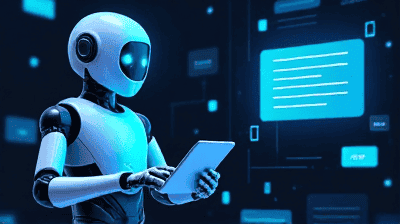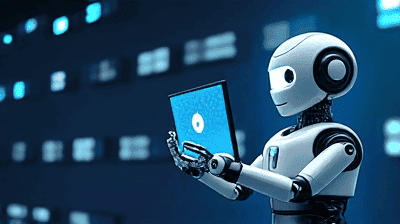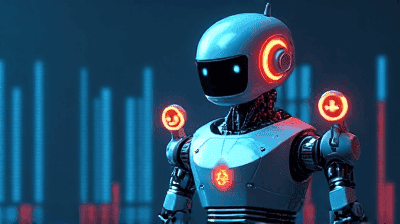
In recent years, the rise of artificial intelligence has transformed various industries, and customer service is no exception. AI powered chatbots have emerged as powerful tools that can enhance customer interactions, streamline support processes, and improve engagement. As businesses increasingly adopt these technologies, it is essential to explore best practices for implementing AI chatbots effectively.
Understanding AI Powered Chatbots
What Are AI Powered Chatbots
AI powered chatbots are software applications that use artificial intelligence technologies to simulate human conversation. These chatbots can understand natural language, process customer inquiries, provide relevant information, and even perform actions based on user requests. By leveraging machine learning and natural language processing techniques, AI chatbots can learn from interactions and improve their responses over time, making them invaluable assets in customer service.
Types of AI Powered Chatbots
There are various types of AI powered chatbots, each designed to fulfill specific functions:
Rule-based Chatbots: These chatbots follow predefined rules and scripts to respond to user queries. They are suitable for handling frequently asked questions but may struggle with complex inquiries.
AI-Driven Chatbots: These chatbots utilize machine learning algorithms to understand and learn from conversations. They can handle a wider range of inquiries and provide more personalized responses.
Hybrid Chatbots: Combining the features of both rule-based and AI-driven chatbots, hybrid chatbots offer the best of both worlds. They can follow specific guidelines while also leveraging AI to handle complex interactions.
Benefits of AI Powered Chatbots

Enhanced Customer Experience
AI powered chatbots provide instant responses to customer inquiries, significantly improving the customer experience. Customers no longer need to wait in long queues for support, as chatbots can address their concerns in real time. This level of responsiveness enhances customer satisfaction and helps build brand loyalty.
24/7 Availability
One of the key advantages of AI chatbots is their capability to operate around the clock. Unlike human agents, chatbots can provide support and assistance at any time of day, ensuring that customers always have access to help when they need it. This continuous availability helps businesses cater to global customers across different time zones.
Cost Efficiency
Implementing AI powered chatbots can lead to significant cost savings for businesses. By automating routine inquiries and support tasks, organizations can reduce the workload on human agents. This allows customer service teams to focus on more complex issues that require human intervention, optimizing resource allocation.
Scalability
As businesses grow, their customer service demands often increase. AI powered chatbots can easily scale to handle a higher volume of inquiries without compromising response times. This flexibility allows organizations to adapt to changing customer needs while maintaining high service levels.
Data Collection and Insights
Chatbots can collect valuable data during interactions, providing businesses with insights into customer preferences, pain points, and trends. Analyzing this data can help organizations refine their products and services, improve marketing strategies, and enhance overall customer satisfaction.
Best Practices for Implementing AI Powered Chatbots
1. Define Clear Objectives
Before deploying an AI powered chatbot, organizations should define clear objectives for its implementation. These objectives may include improving response times, increasing customer satisfaction, or reducing operational costs. Having specific goals in mind will help guide the design and functionality of the chatbot, ensuring that it aligns with the organization’s broader business strategies.
2. Understand Your Audience
To create an effective AI powered chatbot, it is essential to understand the target audience. Organizations should conduct research to identify customer demographics, preferences, and common inquiries. This knowledge will inform the chatbot’s tone, language, and overall user experience, making it more relatable and effective in addressing customer needs.
3. Choose the Right Technology
Selecting the right technology platform for implementing AI chatbots is critical. Organizations should evaluate different chatbot development tools and frameworks to find one that aligns with their goals and technical capabilities. Factors to consider include natural language processing capabilities, integration with existing systems, and ease of use.
4. Create a Knowledge Base
An extensive knowledge base is essential for ensuring that AI powered chatbots can provide accurate and relevant responses. Organizations should compile a comprehensive repository of frequently asked questions, product information, and troubleshooting guides. Regularly updating this knowledge base will help the chatbot stay current and improve its performance over time.
5. Train the Chatbot
Training the AI powered chatbot is a crucial step in its development. Organizations should expose the chatbot to a variety of customer interactions, allowing it to learn and adapt to different scenarios. Machine learning algorithms can identify patterns in conversations, helping the chatbot improve its understanding of natural language and context.
6. Implement a User-Friendly Interface
The user interface for the chatbot should be intuitive and easy to navigate. It is essential to design a chat interface that allows users to communicate comfortably. Considerations should include the placement of input fields, the clarity of prompts, and overall layout. A user-friendly interface enhances engagement and encourages customers to interact with the chatbot.
7. Provide Human Escalation Options
While AI powered chatbots can handle many inquiries, there will be instances where human intervention is necessary. Organizations should implement features that allow customers to escalate their issues to human agents seamlessly. This dual approach ensures that customers receive assistance for complex queries while still benefiting from the speed of chatbot responses.
8. Monitor Performance Regularly
Monitoring the performance of AI powered chatbots is essential for continuous improvement. Organizations should track key metrics, such as response times, customer satisfaction scores, and resolution rates. Analyzing this data will help identify areas for improvement and inform updates to the chatbot’s programming and knowledge base.
9. Foster Customer Feedback
Encouraging customer feedback is vital for refining chatbot performance. Organizations should implement mechanisms for customers to provide feedback on their interactions with the chatbot, whether through ratings, surveys, or open-ended comments. This feedback can help identify pain points and areas for enhancement, ensuring that the chatbot meets customer expectations.
10. Stay Updated on AI Advancements
The field of artificial intelligence is constantly evolving, with new developments and breakthroughs emerging regularly. Organizations should stay informed about the latest advancements in AI technology and explore how they can be applied to improve chatbot functionality. Keeping up with trends will ensure that the chatbot remains relevant and continues to provide value to customers.
Case Studies of Successful AI Powered Chatbot Implementations

Case Study 1: Sephora
Sephora, a global cosmetics retailer, has successfully implemented AI powered chatbots to enhance customer engagement. The company’s chatbot provides personalized product recommendations, answers customer inquiries, and even allows users to book appointments at stores. By leveraging AI technology, Sephora has created a seamless shopping experience that engages customers and boosts sales.
Case Study 2: H&M
H&M, a leading fashion retailer, has integrated chatbots into its customer service strategy. The H&M chatbot assists customers in navigating their online store, finding products, and answering common questions. This AI powered assistant enhances the customer experience by providing instant support and streamlining the shopping process.
Case Study 3: Domino’s Pizza
Domino’s Pizza has embraced AI chatbots to improve its ordering process. Customers can place orders through the chatbot on various platforms, including social media and messaging apps. This integration simplifies the ordering experience and allows Domino’s to reach customers where they are most active, resulting in increased sales and customer satisfaction.
Future Trends in AI Powered Chatbots
Increased Personalization
As AI technology continues to evolve, chatbots are expected to become even more personalized. Future chatbots will leverage advanced data analytics to understand customer preferences and tailor interactions accordingly. This level of personalization will enhance customer engagement and loyalty.
Integration with Voice Assistants
The integration of AI powered chatbots with voice assistants, such as Amazon’s Alexa and Google Assistant, will become more prevalent. This development will enable customers to interact with chatbots through voice commands, providing a more convenient and hands-free experience.
Enhanced Natural Language Processing
Improvements in natural language processing will enable chatbots to understand context and sentiment more effectively. Future chatbots will be able to engage in more complex conversations, providing responses that are more human-like and empathetic.
Proactive Engagement
The next generation of AI powered chatbots will focus on proactive engagement, anticipating customer needs before they arise. By analyzing customer data and behavior patterns, chatbots will be able to initiate conversations and offer support, creating a more seamless and satisfying customer experience.
Conclusion

AI powered chatbots represent a significant advancement in customer service and engagement, offering businesses the ability to enhance interactions, improve efficiency, and provide 24/7 support. By following best practices such as defining clear objectives, understanding the audience, and continuously monitoring performance, organizations can implement chatbots that deliver real value to customers.
As businesses look to the future, investing in AI powered chatbots will be crucial for staying competitive. Embracing advancements in personalization, natural language processing, and proactive engagement will ensure that chatbots remain integral to customer service strategies. The successful implementation of AI powered chatbots will not only enhance customer satisfaction but also foster long-lasting relationships with clients.
Related
-

-
Artificial intelligence

-

-

-

-

